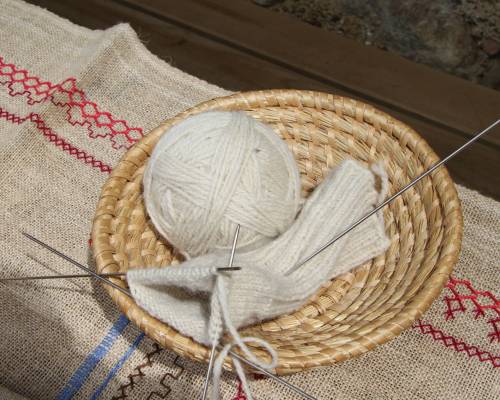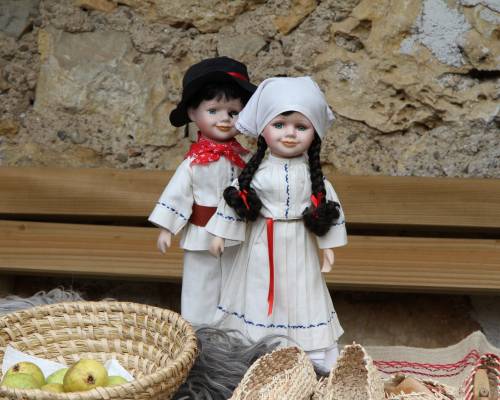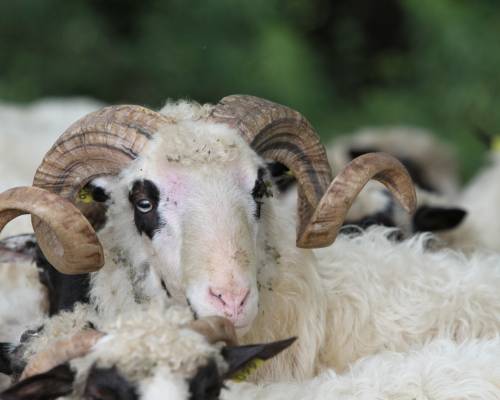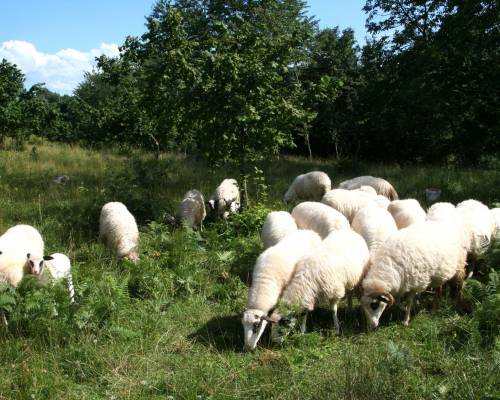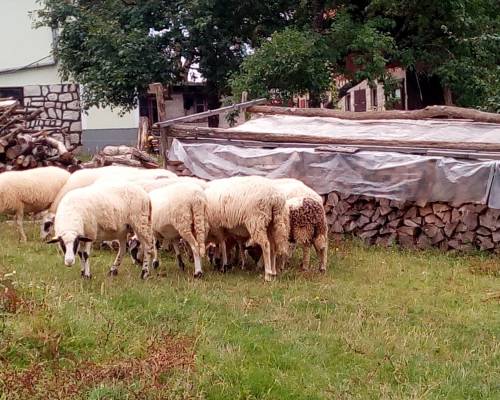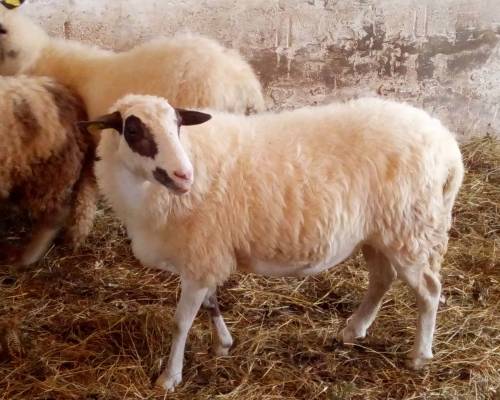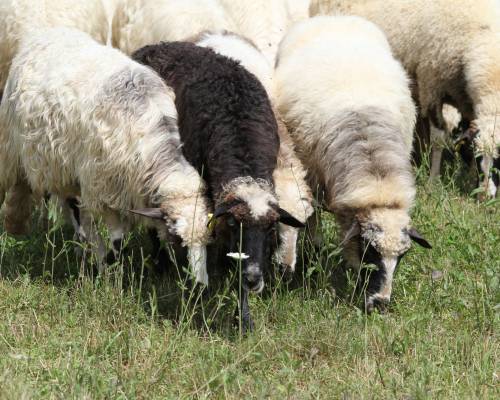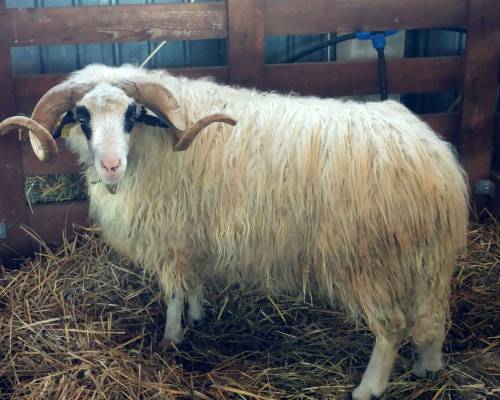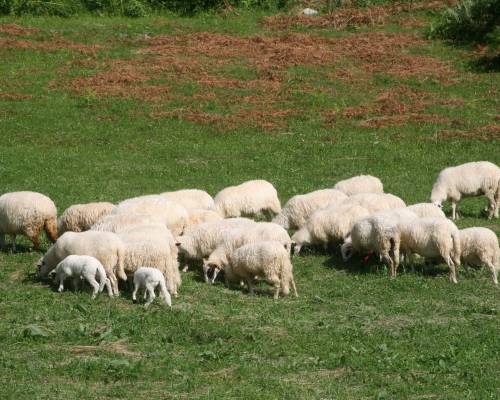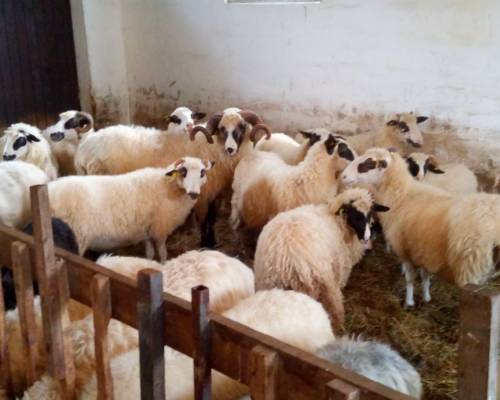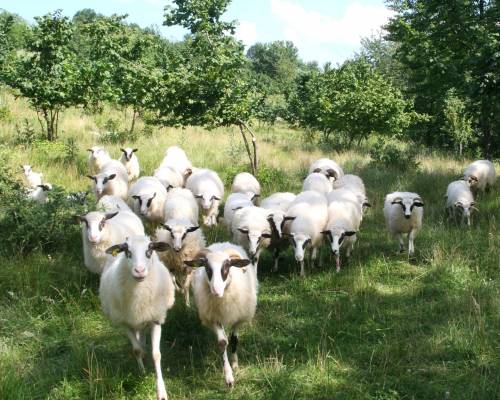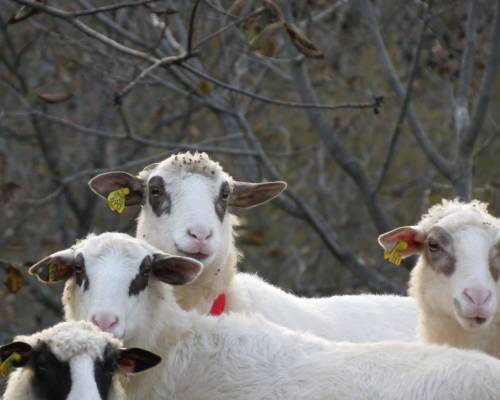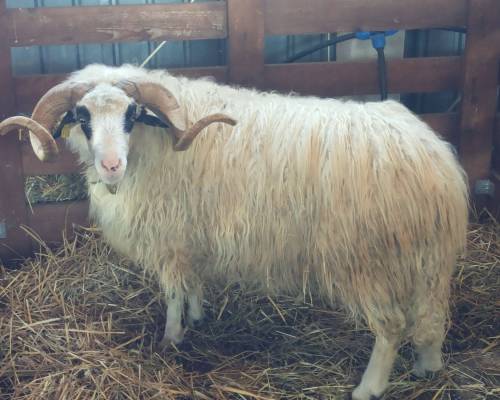Bela Krajina sheep
Origin and Development of the Breed
The Bela Krajina Pramenka sheep developed along the Kolpa River, between Vinica, Adlešiči, and Črnomelj, deriving its name from the Bela Krajina region in southeastern Slovenia. Sheep farming in Bela Krajina flourished during the 16th and 17th centuries, particularly among the Uskoks—Serbs and Croats who fled from the Ottoman Turks. For the local inhabitants, the native sheep were invaluable, efficiently utilizing the sparse, rocky terrains covered with ferns and shrubs. The breed was influenced by Pramenka sheep from Bosnia and Herzegovina, as well as Croatia.
Breed Characteristics
Predominantly white, these sheep feature distinctive black ears and black spots or patches around the eyes and on the legs. They possess long, coarse wool and a notably long tail that nearly reaches the ground. Ewes typically weigh up to 52 kg, while rams occasionally exceed 70 kg. The average withers height for ewes is 68 cm, displaying uniformity across individuals. Rams boast impressive, spiraled horns that, in older animals, curl multiple times. Some females also have short horns. The breed is recognized for its fine bone structure, favorable carcass quality, and excellent meat. The average litter size is 1.1 lambs.
Breed Distribution and Endangerment
The Bela Krajina Pramenka is among the least numerous Slovenian autochthonous livestock breeds. Approximately 1,150 animals are registered in the original herdbook, with farms concentrated in southeastern Slovenia. The breed is considered critically endangered.
Did You Know ...
... attempts were made to crossbreed the Bela Krajina Pramenka with Jezersko-Solčava rams; however, most breeders opposed this practice
... the earliest records, dating back to 1857, mention native sheep in Vinica.
Number of animals
Farm locations
Purpose and Products
The primary purpose of breeding the Bela Krajina Pramenka is for lamb meat production. Lambs are slaughtered relatively young, yielding tender, flavorful, and juicy meat, commonly prepared as spit-roasted lamb. Additionally, the breed is valued for its wool, used in various traditional woolen and felt products. Given their adaptability to rocky pastures, these sheep are excellent for preventing overgrowth, thereby reducing the risk of fires on arid karst terrains.


